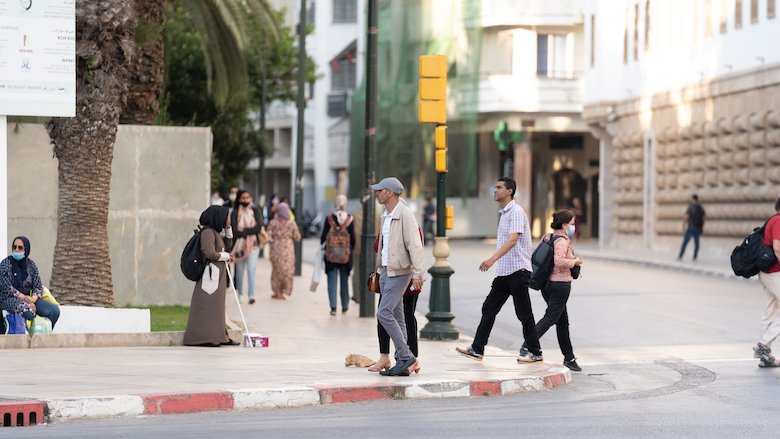A strong economic rebound in 2021 has enabled Morocco to recover most of the output and job losses caused by the COVID-19 crisis. However, real GDP is still 6.4% below the pre-pandemic trend; potential growth has been declining since the early 2010s; volatile precipitations are increasingly affecting the economy; and the combined effect of the drought, rising international food and energy prices due to the war in Ukraine and the lasting impact of the COVID pandemic may leave socio-economic scars if not treated well.
Recent Developments
Morocco's GDP growth rebounded to 7.4% in 2021 after contracting by 6.3% in 2020. This rebound was driven by an exceptional cereal crop after two consecutive years of drought, solid exports and remittances, supportive macroeconomic policies, and significant progress on COVID-19 vaccinations. Annual inflation remained contained at 1.4 % on average, but imported cost-push pressures emerged towards the end of 2021. The consumer price index posted a 3.6 yearly increase in February 2022. These inflationary pressures are related to the new shocks that the Moroccan economy is currently facing: another severe drought and surging energy and commodity prices, fueled also by the war in Ukraine.
Outlook
Growth in Morocco is projected to slow to 1.1% in 2022, as agricultural output declines by 17.3% due to the drought. The economy is projected to be driven by a still solid but moderating industrial performance and a faster recovery of tourism. Ongoing reforms are expected to increase potential growth over the medium-term.
The fiscal impact of the health and social protection reform and postponement of the liquefied petroleum gas and flour subsidy reform will slow the consolidation of the budget deficit (6.2% of GDP in 2022). Public debt is projected to stabilize below 80% of GDP. The current account deficit is expected to widen to 5.5% of GDP due to higher energy and food import bill.
This outlook is subject to various downside risks. The war in Ukraine is increasing global commodity prices, which together with the drought, could increase Morocco’s import bill and public subsidies, thereby impacting the current account and the budget balance. A weaker recovery could exert additional pressures on household and firms’ debt servicing capacity. Inflationary pressures could force the central bank to raise rates, which together with changes in the monetary stance of advanced economies would tighten financing conditions for the public and the private sector.
Rising prices and decreasing agricultural revenues are expected to slow down the post-COVID-19 normalization of socio-economic conditions. Poverty and extreme poverty are expected to stagnate in 2022 at best, and will not return to pre-COVID-19 levels until 2023. Given inflationary pressures, especially for food and energy products, as well as the impacts of the severe drought, measures to support the most vulnerable as well as the broader planned social dialogue will be important measures for the government to take.
